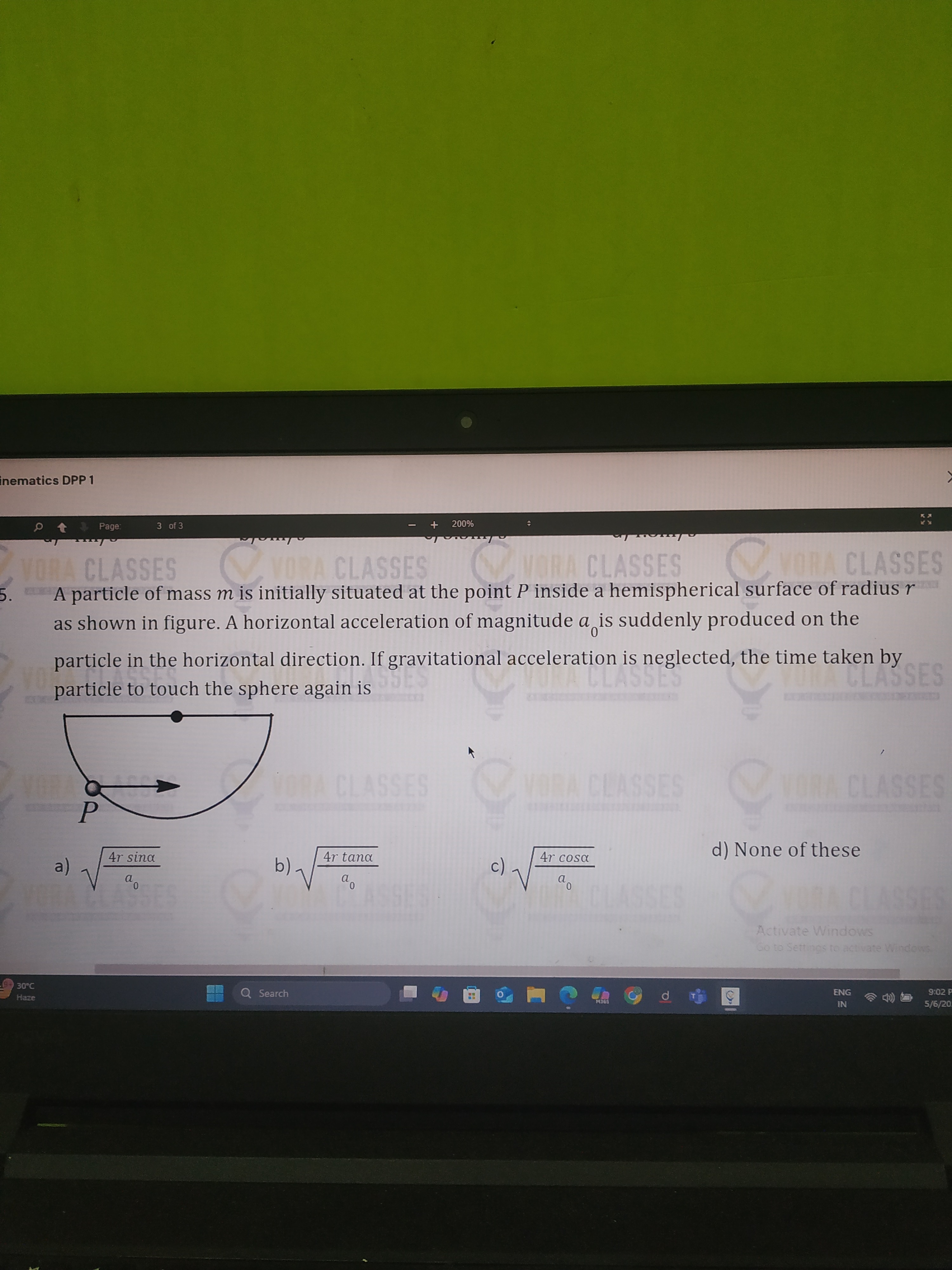Question
Question: A particle of mass $m$ is initially situated at the point $P$ inside a hemispherical surface of radi...
A particle of mass m is initially situated at the point P inside a hemispherical surface of radius r as shown in figure. A horizontal acceleration of magnitude a0 is suddenly produced on the particle in the horizontal direction. If gravitational acceleration is neglected, the time taken by particle to touch the sphere again is

a04rsinα
a04rtanα
a04rcosα
None of these
a04rsinα
Solution
Let's assume the center of the hemispherical surface is at the origin (0,0). The equation of the hemispherical surface is x2+y2=r2 for y≥0.
From the figure, the particle is initially at point P. Let's assume the angle α is measured from the vertical axis to the line segment from the origin to P. Since P is on the left side, the coordinates of P are (−rsinα,rcosα). The particle is initially at rest, so the initial velocity is v0=0. A horizontal acceleration of magnitude a0 is applied in the horizontal direction, which is the positive x-direction as shown in the figure. So the acceleration is a=a0i^.
The initial position vector is r0=−rsinαi^+rcosαj^. The position vector of the particle at time t is given by r(t)=r0+v0t+21at2 r(t)=(−rsinαi^+rcosαj^)+0⋅t+21a0t2i^ r(t)=(−rsinα+21a0t2)i^+rcosαj^
Let the position of the particle at time t be (x(t),y(t)). Then x(t)=−rsinα+21a0t2 and y(t)=rcosα. The particle touches the sphere again when its position (x(t),y(t)) satisfies the equation of the hemisphere x2+y2=r2 and y≥0. Since the acceleration is only in the x-direction, the y-coordinate of the particle remains constant, y(t)=rcosα. For the particle to be on the hemisphere, we must have y(t)≥0, which means rcosα≥0. Since r>0, we have cosα≥0. From the figure, α is an acute angle, so cosα>0.
Substitute x(t) and y(t) into the equation of the sphere: x(t)2+y(t)2=r2 (−rsinα+21a0t2)2+(rcosα)2=r2 (−rsinα+21a0t2)2+r2cos2α=r2 (−rsinα+21a0t2)2=r2−r2cos2α (−rsinα+21a0t2)2=r2(1−cos2α) (−rsinα+21a0t2)2=r2sin2α Taking the square root of both sides: −rsinα+21a0t2=±r2sin2α −rsinα+21a0t2=±rsinα
Case 1: −rsinα+21a0t2=−rsinα. 21a0t2=0 t2=0⟹t=0. This corresponds to the initial position.
Case 2: −rsinα+21a0t2=rsinα. 21a0t2=rsinα+rsinα 21a0t2=2rsinα t2=a04rsinα t=a04rsinα (since time t must be non-negative).
This is the time taken for the particle to touch the sphere again.
